A meteor explodes over Michigan
The space rock broke up as it came racing out of the sky just west of Detroit
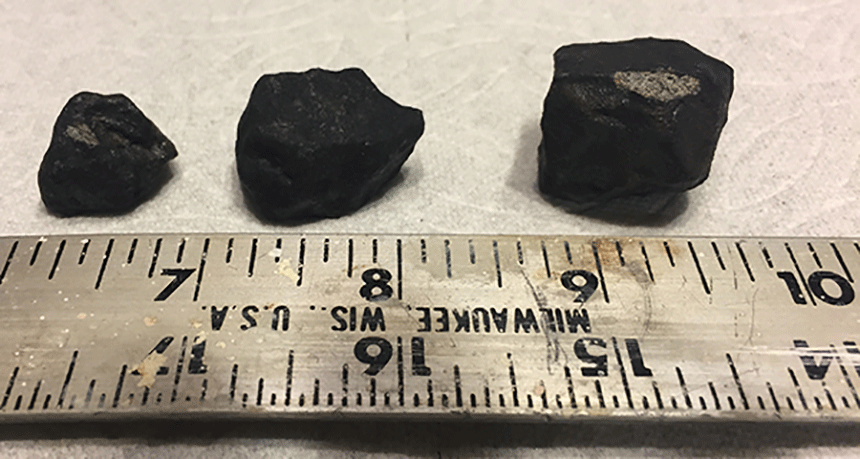
These meteorites were discovered by Longway Planetarium astronomers Todd Slisher and Buddy Stark, by the Flint, Mich., planetarium’s content developer Brian Wolff, and by Farmington Community Stargazers member Tony Licata. They are some of what is left over from a fireball that streaked across the Michigan sky on January 16.
Longway Planetarium
A bright flash of light. Moments pass. Then a rumble. The ground shakes a little. It can be only one thing — thunder and lightning. Right? That’s what most residents of Eastern Michigan thought when they heard a boom just after 8 p.m. on January 16.
The only problem? It was below freezing and there was hardly a cloud in the sky. That’s not the expected environment for a thunderstorm.
Social media lit up as confused natives reported a bright blue explosion followed by ground tremors. About two hours later, the National Weather Service in Detroit announced it could “confirm the flash and boom was NOT thunder.” The most likely culprit was a meteor.

Paul Gross is a meteorologist at WDIV-TV in Detroit. It’s been one of his goals to make TV meteorologists a resource for more than just covering the weather. And when “a giant meteor lit up the skies over the Detroit metropolitan area,” he says, it provided him an opportunity to do just that.
“The estimated 6-foot- [1.8-meter-] diameter space rock created a bright fireball that broke up,” he tells Science News for Students. This was due to the intense pressure, he says, “experienced as it raced through our atmosphere.” The meteor travelled at an estimated 45,000 kilometers (28,000 miles) per hour, creating a sonic “boom” that startled many people. That sound shook the ground enough, Gross says, to mimic a magnitude 2.0 earthquake.
The racing meteor’s aerial “flash was so bright that it was detected by the Geostationary Lightning Mapper,” he notes. That’s an instrument on the latest weather satellite — the National Oceanic and Atmospheric Administration’s GOES-16. Friction during the meteor’s flight through the atmosphere caused the space rock to break into pieces. Many of them, Gross notes, were large enough to be detected by the National Weather Service’s Detroit-area Doppler radar.
“Meteorite hunters immediately began searching the area where the radar showed the debris trail,” he says. And several space rocks turned up, he adds, “including one [found] by a cameraman at my television station.”
Story continues below video.
Not just a Michigan event
People didn’t have to live in Michigan to witness these all-natural fireworks. The American Meteor Society logged 355 separate reports of a brilliant fireball streaking across the heavens. They came in from seven states. The society pored over the reported observations. It also analyzed video footage and interviewed witnesses about the booms.
Using the visible reports, scientists were able to stitch together the path these falling space rocks likely took. They concluded these must have crashed down somewhere along a line from Brighten to Howell, Mich. That’s only 50 kilometers (30 miles) northwest of Detroit.
The reason people could witness the meteor’s flight was the incredible amount of light the rock produced as it raced through the atmosphere at 11.26 kilometers (7 miles) a second. Friction against the surrounding air slowed it down, converting its energy of motion (kinetic energy) to heat energy (thermal energy) and eventually to light.
This heating becomes so intense that the rock actually began to burn up.
Most meteors, including this one, are chondrites. They are made of tiny chondrules, mineral bits containing silicon. Meteors also have a lot of iron, nickel and magnesium. The latter is the reason they appear to glow blue. Magnesium burns white, but only the blue rays penetrate to the ground.
If a meteor doesn’t totally burn up, parts of it can hit the ground. These remains are known as meteorites. But most meteors explode under the extreme heat of friction as they brush again air molecules in the atmosphere. Such an exploding space rock is known as a bolide. When a meteor transforms into a bolide, bits of the initial rock may now spread out and rain down over the surrounding countryside.
That’s where knowing about the sound becomes useful. The International Meteor Organization notes that “bangs or swishing sounds, or possibly other noises” can be linked with meteors and offer clues to whether they have shattered.
Those sounds may arrive several minutes after sighting the burning space rock. The reason? Sound travels much more slowly than light. Last week’s incoming meteor, for instance, traveled at Mach-37, according to NASA. That’s 37 times the speed of sound. That’s very fast. But the speed of light is 874,030 times the speed of sound.
On rare occasions, it’s possible to hear sound at the same time you see the meteor high in the sky. This may seem crazy, but it has to do with radio waves. Scientists have speculated that rapidly moving meteors may emit very-low-frequency (VLF) radio waves. VLF waves move at the speed of light and then interact with conducting bodies at the surface. These conducting bodies can be any structures or even the ground itself — anything that permits miniscule electrical currents to pass through. Sometimes this produces a shrill chirping sound. Similar phenomena are sometimes observed beneath an aurora. Research into such sounds is still ongoing, as the electrical structure of the atmosphere remains poorly understood.
It made the Earth quake
The 1.8-meter wide meteor would have weighed a whopping 1,000 kilograms (2,200 pounds) before it exploded. The sound of its breakup would produce a substantial shock wave through the atmospheric. Imagine throwing a rock into a pond. It would send ripples outwards in concentric rings. That’s exactly how the sound waves would have spread. That sound was so loud and Earth rattling that it tricked some people into thinking it was an earthquake.
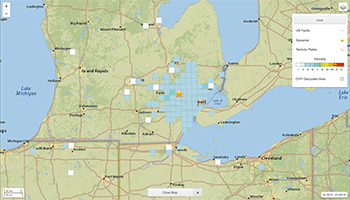
Stephen Szulborski is a meteorologist and weather observer at Detroit Metropolitan Airport. It’s his job to take and log hourly observations of conditions on the runways. This information helps air-traffic-control teams make decisions that keep pilots and passengers safe.
“I was not expecting something so exciting to happen during my weather watch,” he says of this past January 16. Szulborski was facing south, so he only caught the meteor — which fell to the west — out of the corner of his eye. “I caught the flash,” he says. “But I didn’t think much of it because of all the planes moving around as usual.”
Then, seconds later, the building shook. That’s when he knew something big had happened. “We thought a plane had rammed the building,” he recalls.
Only later, when reviewing social media, did he realize he had seen a meteor.
The shaking was even picked up by seismometers (Size-MAH-meh-turz). These are instruments that measure the movement of Earth’s surface. They registered the seismic waves as equal to those produced by a magnitude 2.0 earthquake. The trembling ground was felt more than 70 kilometers (43 miles) away, according to the U.S. Geological Survey.
As seen from space
NOAA has a series of Geostationary Operational Environmental Series (GOES) satellites in orbit around Earth. The 16th in that series launched last November 19 from Cape Canaveral, Fla. Roughly two months into its career, GOES-16’s lightning mapper accidentally witnessed the Michigan meteor’s pyrotechnics.
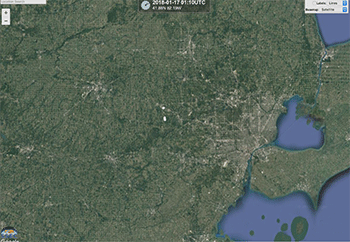
This instrument records lightning flashes by the light they produce high up in the clouds. The meteor illuminated the landscape so intensely that the satellite mistook this for lightning, despite there being no storms in the area.
A National Weather Service station in White Lake, Mich., runs a Doppler radar system about 35 kilometers (22 miles) from where the meteor entered the atmosphere. As the meteor broke apart, the radar beam bounced off the pieces. The returning signal tricked the radar into thinking something was there.
But the radar is “smart.” It knew the signal wasn’t from rain, snow or other precipitation. That’s because this is dual-polarization device. That means it radiates waves that alternate between horizontal and vertical orientations. These send a pulse to bounce off an object, which then returns an echo back to the radar. If more of one type of signal is returned than the other, the system can gauge something about the shape of an object.
The round, normal shapes that typically fall from clouds — raindrops, snowflakes or hail — tend to return just as many echoes from the vertical pulses as from the horizontal radar waves. But the same is not true for objects whose shape is jagged, bumpy or otherwise weird. And meteors qualify in that last category.
The White Lake radar system picked up echoes of the debris at 8:07 p.m. The beam passed through the atmosphere in slices oriented at 4.5º, 3.5º and 2.5º above the horizon, respectively. That means the beam scans for things higher up and gradually for ones lower.
The first sweep (at 4.5º) recorded 8 bizarre pixels about 3,000 meters (10,000 feet) above the ground. That was the meteor! This was near Whitmore Lake. Then one scan lower showed the debris a bit farther northwest. When the radar was set to 2.5º, one of the lowest levels, the space rock had moved much farther northwest. More importantly, this echo was more diffuse. It showed bolide debris spreading out as a spattering of broken rocks raining down from the night sky.
Story continues below slideshow.


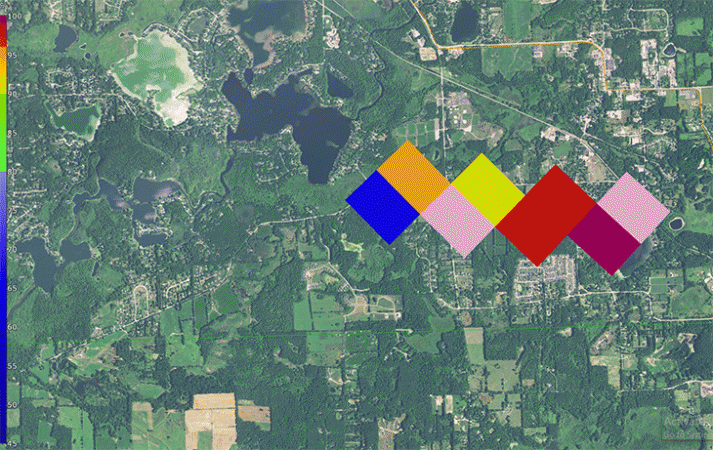
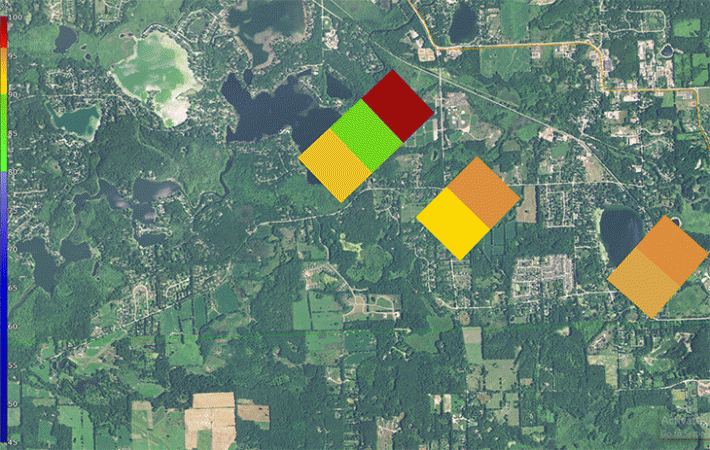
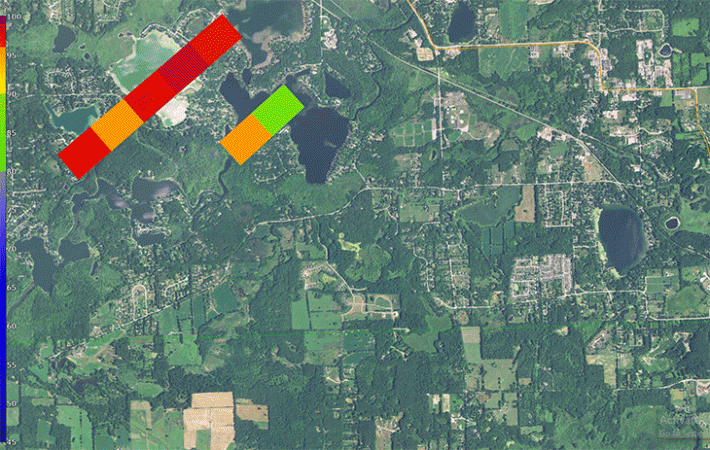
As morning dawned, meteorite hunters came out in force. People scanned the area furiously to claim their piece of the prize. Indeed, some meteors are worth their weight in gold — or more!
One international auctioning group offered a $20,000 prize for the first person turning in a stone weighing at least one kilogram (2.2 pounds). That may be tough, however. The force of the explosion likely dashed most stones that size to pieces. Still, dozens of people armed with metal detectors targeted the town of Hamburg as one of the most likely places to find a bit of the space rock.
The first reported findings came in on January 18. A pair of professional searchers spied two fragments on a frozen lakebed.
Jacob Nagel is a news photographer at WDIV-TV. He seized the meteor as an opportunity to teach his kids a lesson about science. They headed out to scout for space rocks with high hopes. And they were rewarded. Shockingly, they found a meteorite.
Astronomer Todd Slisher is executive director of the Sloan Museum and Longway Planetarium in Flint, Mich. “I didn’t see the meteor itself,” he reported at a news briefing. However, he added, “I have cameras at my house.” They picked up light from the meteor, putting the house in shadows. “And by using the shadows of the house, I was able to calculate the rough location of where the meteor should have come down.”
Then he turned to American Meteor Society data. This group had used all of those sighting reports to help triangulate the flight path of the meteor. “Their data matched up with my data from pictures of the house,” Slisher says. This scientist then reached out to a friend at NASA. “He clued me in to the fact that weather radar can actually show you the pieces of debris falling down after the meteor explodes.” So Slisher and his colleagues started looking at weather data. Based on where all of those data pointed them, they launched a hunt. And they quickly retrieved three meteorites that had rained down from the Tuesday night bolide.
Even with all those meteorite hunters, there may still be more space rocks left to find. Who knows? If you live in Michigan and have a free afternoon, you too might just find something “out of this world.”







